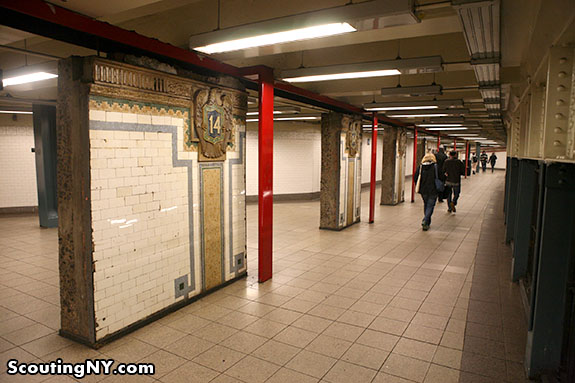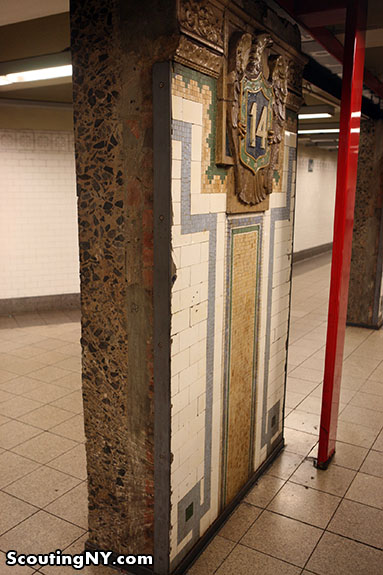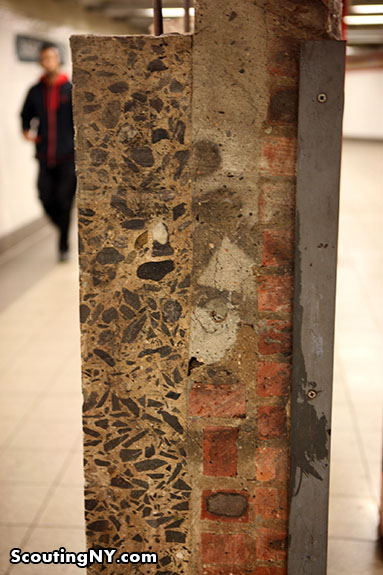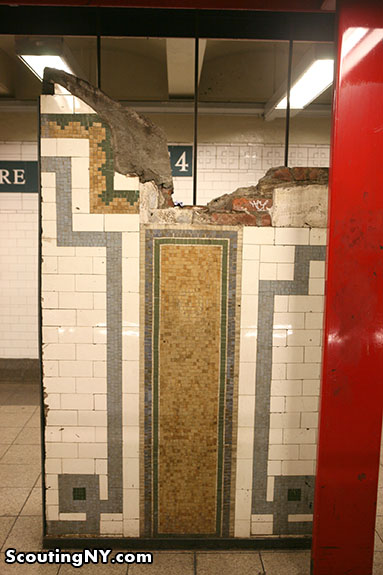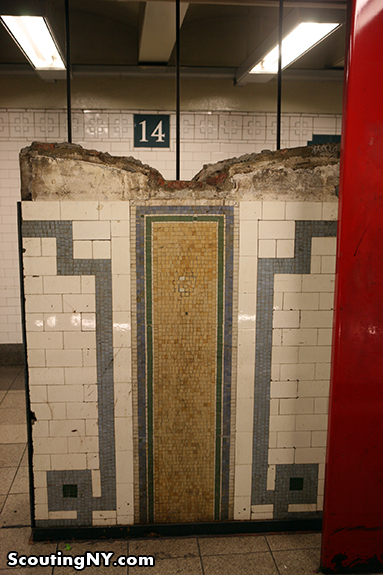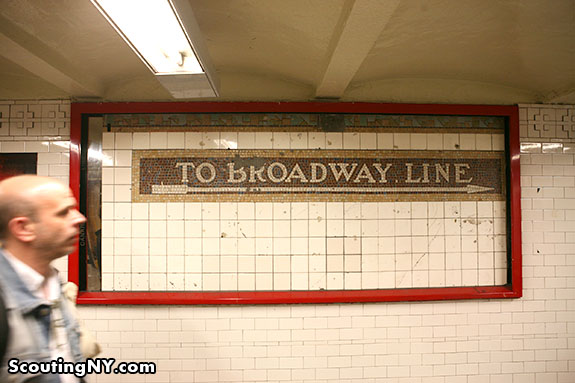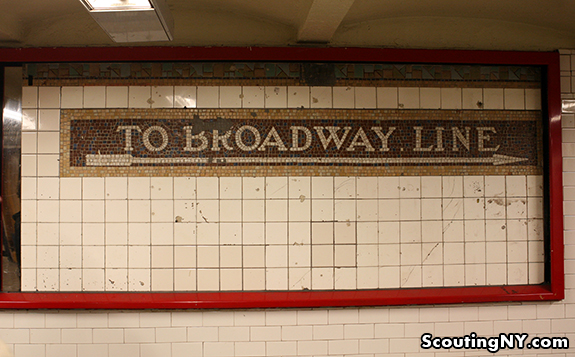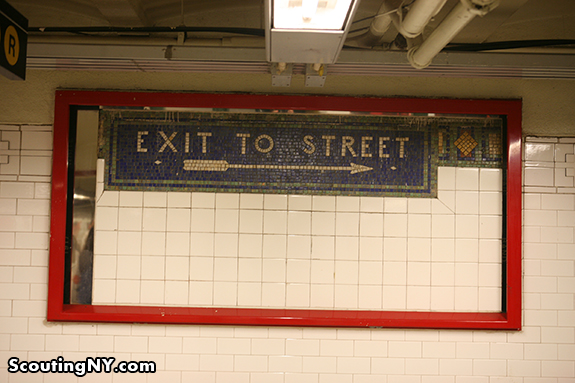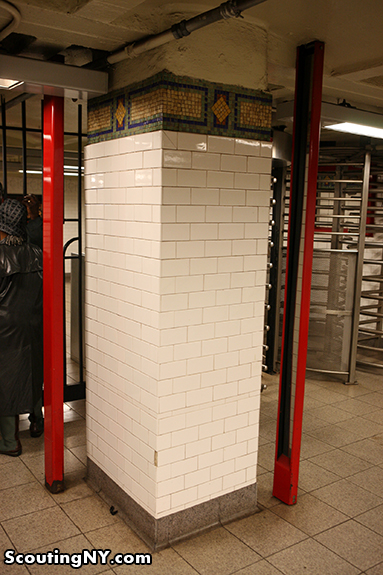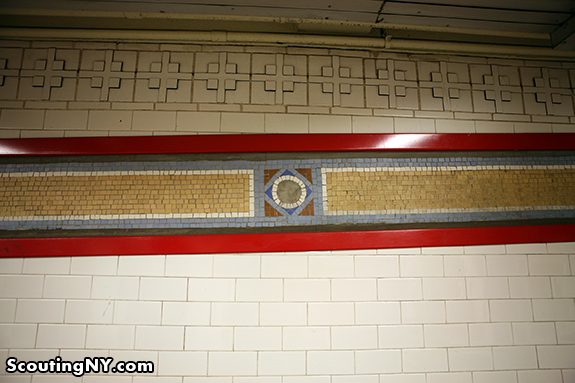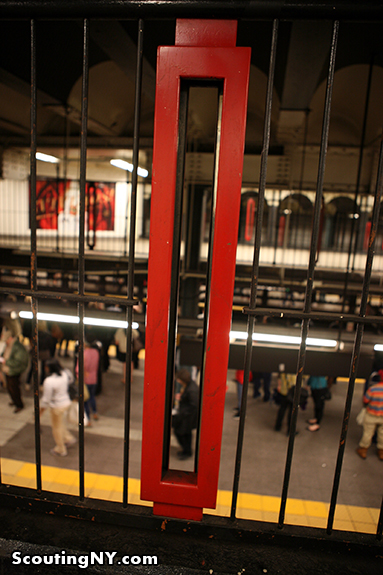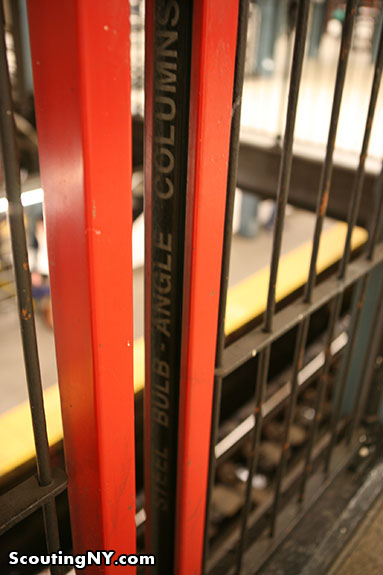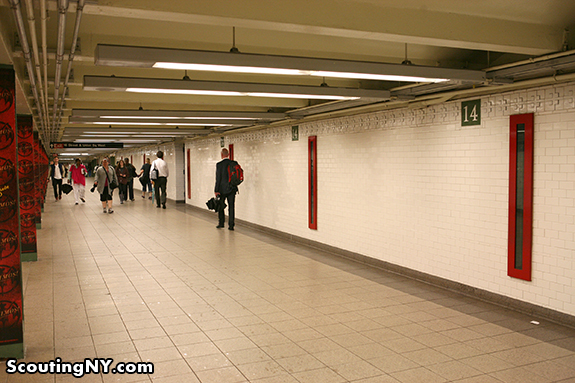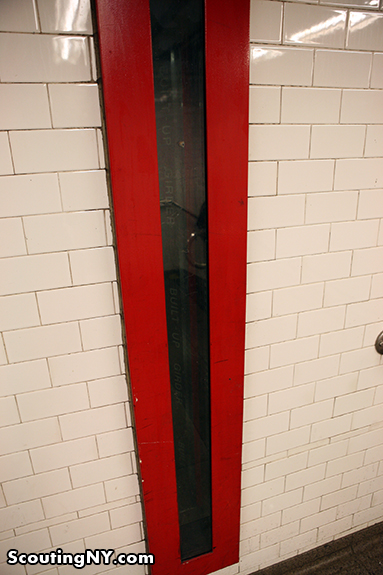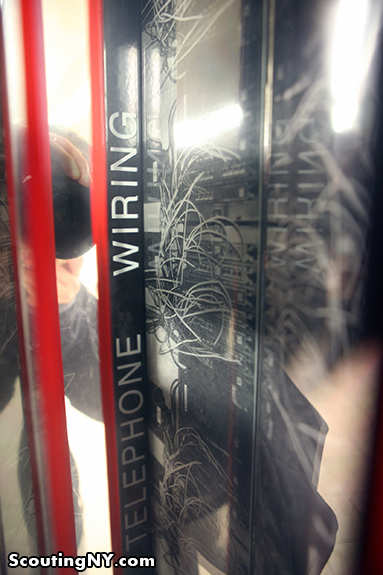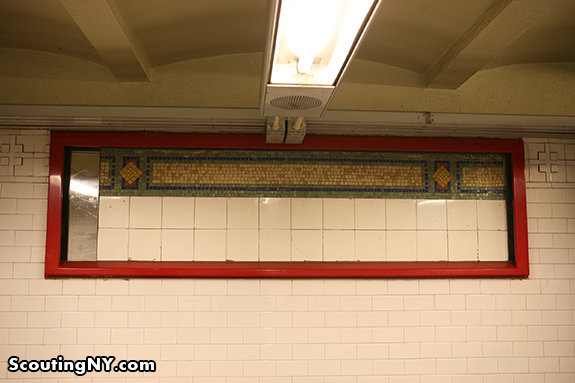A couple of weeks ago, I was taking pictures in Union Square for my article on The Warriors filming locations, when I happened to pass by these six crumbling columns on the mezzanine level near the 4-5-6 train.
Now, I’ve walked by these things a zillion times in my travels across New York City, but it suddenly occurred to me that I’d never actually stopped to look at them.
I’ve always just assumed them to be remnants from the old Union Square station, one of New York City’s original 28 subway stations, and it turns out that this is correct.
Dating to the Union Square of 1904, the station’s walls were once adorned with these fantastic terracotta eagles, along with some beautiful mosaic work:
The walls were uncovered and saved during one of Union Square’s many renovations, and installed as an art installation by Mary Miss in 1998. I love how the innards of the walls have been included in the display…
…showing a sort of geological strata of a New York City subway station wall:
The wall portions are arranged so that they steadily deterioriate…
…perhaps signifying the death of the old Union Square?
Now, here’s the thing – I’ve always known about these wall portions.
What I didn’t know about are the red frames.
See, as it turns out, the wall portions are just a small part of Miss’s installation. In fact, there are dozens of relics from the old Union Square strewn all over the station, all of which can be found enclosed by a red frame. And once you start looking for them, you’ll suddenly see them everywhere.
For example, I never thought twice about this Broadway Line directional arrow – but looking at it again, I now realize how incongruous its design is to the rest of the station. In addition to the mosaic Broadway text, note how the surrounding white tiling is in the old square style, while an additional mosaic strip runs along the top – all stopping abruptly at the red border.
Ditto this great old “Exit To Street sign.” Again, I’ve noticed it countless times before, but never stopped to consider how out of place what’s within the red frame is to what’s outside. In a way, each is literally like a window into the past:
Wandering around Union Square, I started finding red frames in more places than just the walls. Here’s a column you’d never think twice above – but wait! There are those red frames, and between them, we find a white-tiled column topped by a tiled stripe, an all but extinct creature in modern Union Square:
Here’s another red frame, one of my favorites, again highlighting not only the mosaic stripe along the top, but the difference in the old white wall tiling vs. new (and is that authentic old-fashioned New York City grime?):
Along one of the connecting passages…
…a very long mosaic stretches the entire run:
It gets even crazier, as the red frames turn up in the most unexpected of places. Here’s one looking down from the mezzanine above the 4-5-6 train…
…and if you look in at the right angle, you’ll see it’s highlighting “steel-bulb angle columns.”
In the corridor running north toward the 17th Street entrance, there are a bunch of slits cut into the wall…
…which offer a slightly more abstract window into Union Square:
For example, a tangle of telephone wiring:
I’m sure this is old news to a lot of you. But for anyone else like myself who’s been to Union Square a million times and never stopped to look, learning about the red frames is an eye-opening experience, as you suddenly realize you’re basically surrounded by a museum exhibit for the Union Square of old.
Ha, and all this time, I just assumed there was a fire extinguisher on the other side of that red frame.
-SCOUT
